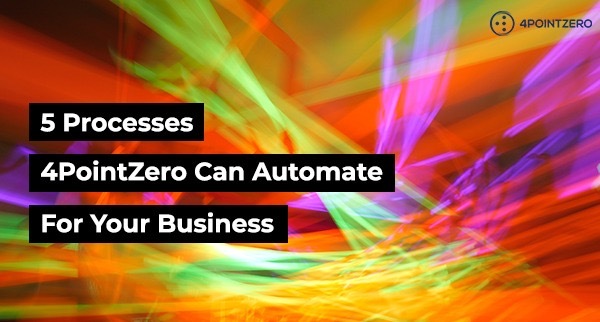Working with 100’s of businesses over many years, we have seen a wide range of scenarios, problems and solutions. Some of those we have had to test, build and/or implement. Going through this business process has enabled us to understand how and where many challenges and inefficient processes sit across a wide range of finance functions. These business processes automation led us to develop specific and tailored approaches to ensuring simple tasks are handled as efficiently as possible, and the business has the full range of reports/controls it needs to improve profitability.
An SME finance function will largely spread its tasks between 2 systems, one being Excel and the other being the accounting system (or integrated systems) itself. The below article explains how business process automation tackles the processes undertaken in the accounting system:
Imports
If systems (usually operational) are not integrated, accountants or bookkeepers can spend significant amounts of time extracting data, reformatting, checking it adds up correctly, importing and then reviewing the posting. Even for a skilled Excel user, this process can take a few hours with various checks and reviews required through this manual process. You might think the logical solution would be to simply change the operational system to something that can integrate but this could be costly, unviable or simply, a business may not want to change its operational processes to suit the finance department.
From identifying this issue, we now have business process automation tools which can deal with the problem. So long as the data is obtainable from the source system (we have various intelligent techniques of achieving this), we have sophisticated mapping tools that are able to reformat any data source and post a desired accounting transaction as per a your own accounting setup/specifications and across a wide range of accounting systems, including all of the market leaders.
As we are also connected to the source system, we can automate business processes, so your books are kept up to date every single day automatically for any data source you are able to send us or that we can collect. This could be sales data, purchase data, payroll data, timesheet data, stock information. Basically, anything you want to analyse and/or post into the accounts. It will always be correct, built once and then it will work forever.
Reconciliations
Many businesses will often need to reconcile different data sets as part of checking everything is correct. As an example, you might have an operational system that tells you how much your customers owe you and then you might want to reconcile this against the accounts. This would be the kind of thing an auditor would check as part of a statutory audit so it’s good to stay on top of this. Further examples might be on a Point of Sales system where you have a sales report showing what sales happened on a day and then a tender report identifying what has been cashed up and therefore, the amount to be deposited in the bank. You might want to check that these reports match and no money has gone missing which justifies doing the process even though it involves a level of duplication of data.
Historically, this is an item that might be completed in Excel or manually. This might be ok if there is only one item to check but if there are many, this can be complicated and time consuming. As part of point 1, where we collect the data from the operational system, we can also collect data from the accounting system. Having both data sets, we then automate any reconciliation daily. This means that you can be in no doubt your data is correct in all systems (when it reconciles), or if there are errors, you can investigate them immediately and spend more time solving problems rather than calculating if one exists.
Reports
After the above items are completed, a business owner would then want to understand how the business process automation is performing financially and operationally. Again, this tends to be something completed in Excel as it is flexible and so can show information in a way that suits the business. Some systems can produce management reports which will work to a degree, but many will want something more like bespoke dashboard. The strength of any excel output will be dependent on the skill of the builder and he/she will determine if this is an intelligent process or not.
Many accounting systems will have the ability to export data via an ODBC link or Excel Plugin. So extracting data can be made efficient and you can then format the data into something more understandable and useful for business owners. This will work well whilst nothing changes but when things do or reporting requirements increase, this can produce errors upon which business decisions are made.
The above option may solve your financial reporting but then to have a full board pack, you face the challenge of including operational performance metrics as well. Many businesses will negate this issue either by extracting reports from the operational source system via a plugin or manually export and add another report. More common is the accountant will create reporting categories in their accounts system so they can split items across departments/business units so the reports come from one place. This approach can work but it also can create reconciliation issues as your reports just use the data in the accounts and sometimes things can change between systems without it being realised.
It may also be fine if you have 1 or 2 departments/business units but when you have 5,10 or 50+, splitting costs across this many departments can become admin heavy and time-consuming. You are also using an accounting system to solve accounting compliance and reporting issues caused and is not necessarily designed to track operational performance. Also, there might be a limit on reporting categories allowed in the accounting systems and as such, data can be lost through the transfer of data from Operational System>Accounting System>Reports. Without all the data this can lead to incorrect decision making.
As per points 1 and 2, we solve this issue by connecting all the systems together and using intelligent technology, with the same data sets, all communicating with each other to create one accurate and real-time picture of the business. We have KPI analytics tools that will breakdown and map data sets together into any desired structure. This creates real-time:
- Financial reports (Profit and Loss, Balance Sheet, Cashflows) for the business or any business unit/department and consolidate/aggregate these in any way required.
- Operational Reports: Reports that analyse sales, purchases, time, wastage, any value we can obtain by any category including employee, product, day segment, weekday.
- Dashboards with any of the above metrics at the department level with specifics or for the whole company at a summary level.
Posting and Authorising Invoices (if relevant, matching to delivery notes)
This point is possibly quite well publicised already in recent times, but there are tools that will scan invoices via OCR technology and make this process much more efficient. Such providers as Receipt Bank, Autoentry, Hubdoc, Basecone etc. All have their own USP’s, but all tackle a similar issue which is to make sure a business isn’t posting invoices manually. They also create posting rules so that an accounting posting can be posted automatically from a document. As mentioned above in point 1, for larger suppliers with 100’s of invoices, this may be imported in some businesses rather than processing manually, but it can mean you have to keep stack of paper for audit time when it could be scanned efficiently.
The concept of scanning invoices by now is (hopefully) not too revolutionary and adds a lot of value. So, if you are not using one, I would encourage to move to business process automation. Where the difference can be made and where we would look to help is to allow a business to understand which provider is best for them and whether it solves all their cost control issues. I.e. does the software cover invoice authorisation, personal expenses, credit cards, audit trail, scanning at cost centre/department level etc.
The opportunity should also be used to consider the whole process. I.e. if a business has purchase orders, or delivery notes and these need to be reconciled to the invoices. Is this process also being made as efficient as possible? This is were business process automation comes in.
Collecting Bank Data and paying suppliers
Similar to the previous point, this is possibly quite well publicised already, but modern accounting systems have developed connectivity to various banks. This can automate the collection of data from your bank statements into the accounting system so you can post this efficiently. Like with purchase invoices, the system will create a rule whereby if it recognises the transaction, it will create an accounting entry which you can review and post. This means you only deal with reviewing and/or posting exceptions or new items. It helps to avoid the process of logging into the bank, downloading statements, reformatting, importing, posting, checking its correct which can be time consuming. If you have repeat transactions, this can automate the business process by approx. 95% which will save you a lot of time.
What’s more, when you scan invoices and populate supplier details in your accounting system, new systems will have the ability to create payment files. Bank details are very useful for scanning systems as numbers are often easier to read than text and less variable. So, as you build this information to help the scanning software, you are tackling two issues as the supplier bank details are being populated, which you can later user to create payment files and pay suppliers in bulk. Modern systems will be able to create BAC’s files that you can upload into your online banking and then release in bulk, making this a much more efficient process.
The above are some quite detailed examples of where we work with our customers to solve business issues and increase their profitability. They are accounting solutions that can be tailored to any business. If you would like to know more about business process automation, please do contact us and visit our website at www.4pointzero.co.uk.
Frequently Asked Questions (FAQ)
What is a business process automation?
Business process automation refers to the use of technology and software to streamline and automate repetitive tasks and workflows within a business. It involves replacing manual processes with digital solutions, allowing for increased efficiency, reduced errors, and improved productivity.
Why is business process automation important?
Business process automation is important for several reasons. Firstly, it helps businesses save time and resources by automating repetitive tasks, enabling employees to focus on more strategic and value-added activities. Secondly, automation reduces the risk of human error, leading to improved accuracy and consistency in business operations. Lastly, it enhances productivity and scalability by optimizing workflows and ensuring smoother coordination between different departments or teams.
What are the benefits of automating business processes
Business process automation can benefit various areas within a business. Common areas include finance and accounting, human resources, customer service, sales and marketing, supply chain management, and IT operations. By automating tasks such as invoicing, employee onboarding, customer support ticketing, lead nurturing, inventory management, and system monitoring, businesses can streamline operations and achieve significant time and cost savings.
How to automate business processes?
To automate business processes, you can follow a systematic approach. Start by identifying the processes that are suitable for automation, such as repetitive tasks or workflows with predefined rules. Analyze the existing workflows and select appropriate automation tools or software. Design the automation by mapping out the steps, triggers, and actions involved, and set up rules or logic to handle exceptions.
What challenges can businesses face when implementing business process automation?
While business process automation offers numerous benefits, there can be challenges during implementation. Some common challenges include resistance to change from employees, difficulty integrating automation tools with existing systems, ensuring data security and privacy, and selecting the right processes for automation. It’s crucial for businesses to anticipate these challenges and address them proactively to maximize the success of their automation initiatives.
How can businesses measure the effectiveness of business process automation?
To measure the effectiveness of business process automation, businesses can track key performance indicators (KPIs) related to the automated processes. These can include metrics such as process cycle time, error rates, cost savings, productivity improvements, customer satisfaction ratings, and employee feedback. Regular monitoring and analysis of these KPIs can provide valuable insights into the impact of automation and help identify areas for further optimization.



